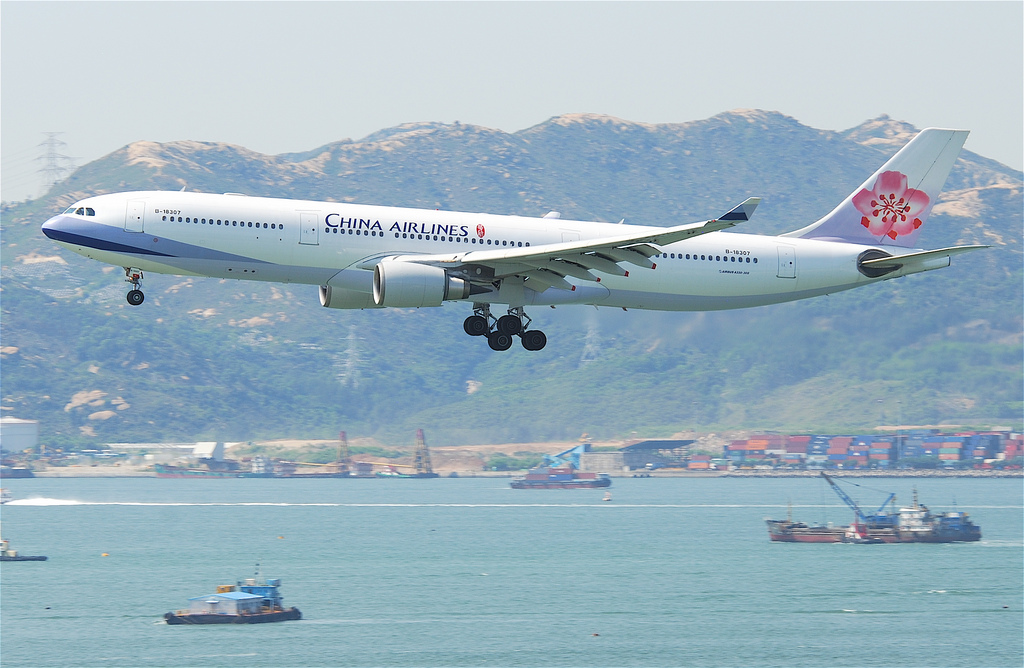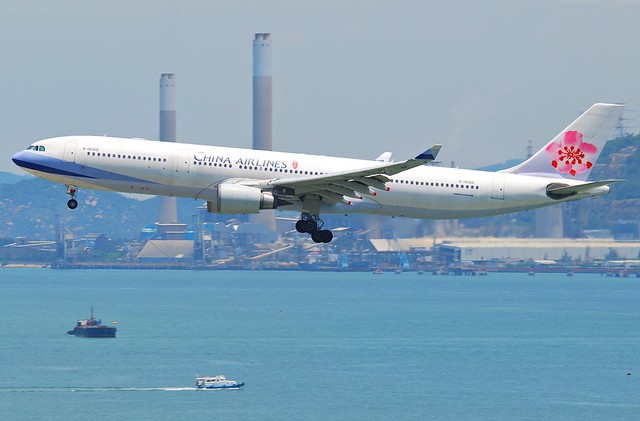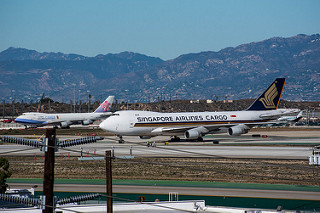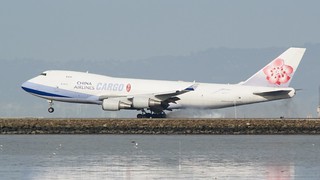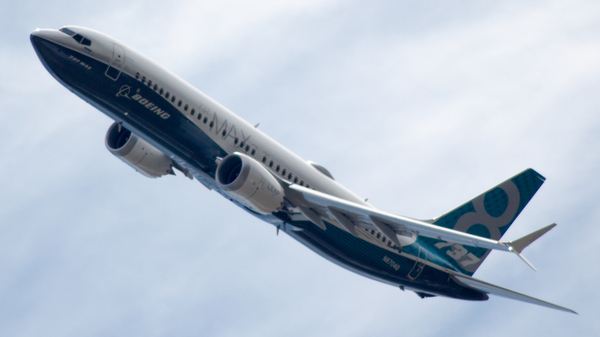China Airlines A333 at Taipei on Oct 1st 2016, tail strike on go around
Last Update: February 1, 2018 / 15:48:46 GMT/Zulu time
Incident Facts
Date of incident
Oct 1, 2016
Classification
Accident
Airline
China Airlines
Flight number
CI-704
Departure
Manila, Philippines
Destination
Taipei, Taiwan
Aircraft Registration
B-18307
Aircraft Type
Airbus A330-300
ICAO Type Designator
A333
The occurrence aircraft is still on the ground 32 hours after landing.
The airline reported the aircraft received not only abrasions to the tail skin, but also suffered structural damage to the tail section and a breach of the pressure vessel.
Taiwan's Civil Aviation Authority opened an investigation into the occurrence rated an accident.
On Oct 3rd 2016 Taiwan's Aviation Safety Council (ASC) reported that the aircraft's tail contacted the runway surface during the go-around leaving debris on the runway. Due to changing weather active runway was changed from 23 to 05 about 8 minutes after the go-around. A runway inspection found marks on the runway consistent with a tail strike as well as debris, the runway was closed. The tail section suffered substantial structural damage, the ASC is investigating the accident.
On Feb 1st 2018 the ASC released their final report in Chinese (executive summary in English) concluding the probable causes of the accident were:
Findings related to probable causes:
- The attention allocation and situational awareness of the Instructor Pilot were probably affected by the training Captainfs nose-holding tendency after touchdown addressed in the training record, so that he focused too much on the aircraftfs attitude but neglected to monitor critical information during landing as a pilot monitoring should do. For this reason, the Instructor Pilot was neither aware of the gREVh indication on the Engine/Warning Display page nor the position of reverse thrust levers, thus as a result neither held the status of thrust reverser in hand nor used it to make decision on whether to continue or reject the landing while taking over the flight control.
- In order to get the aircraft airborne promptly, the Instructor Pilot pulled the side stick full back after taking over the flight control and held that position until the aircraft started to rotate. In the mean time, forward thrust was unable to increase at once since thrust reversers were not in stowed and locked position yet, and the air speed continued to drop while deceleration devices kept functioning. Subsequently under the combination effects of deceleration devices stopped functioning, engine power sharply increased, and the pitch trim position was higher than normal setting, the Instructor Pilotfs full back side stick input caused the aircraft to pitch up rapidly. Though the Instructor Pilot had released the side stick input accordingly, however it didnft overcome the dramatic pitch up tendency. The excessive rotation rate and high pitch during lift-off then led to the loss of tail section clearance, the tail strike, and the damage to the aircraft.
Findings related to risk
- Although the Instructor Pilot commenced the go-around right after his taking over of the aircraft, the call out was made until the main landing gear had lifted off. This delay resulted in the training Captainfs unawareness of Instructor Pilotfs intention, so that he did not fill the role of pilot monitoring, dispute the nonconforming go-around decision in time, monitor or call out to assist Instructor Pilot in the operation of configuration, power setting, attitude, and speed.
- In the occurrence flight, the Instructor Pilot did not take advantage of his professional knowledge and experience to develop an effective situational awareness against the non-normality in the dynamic flight training environment so as to elevate the judging and handling ability for abnormal situation.
In their executive summary the ASC wrote: "At 1927 hour, the aircraft experienced a tail strike when performed a reject landing on the 23R runway of Taoyuan Airport. At 1959 hour, the aircraft safe landed on the runway 05R of Taoyuan Airport with no injury but aircraft belly skin and structure damaged."
Metars:
RCTP 011300Z 10007KT 9999 FEW016 BKN050 28/23 Q1011 NOSIG RMK A2987
RCTP 011230Z 08007KT 9999 FEW016 SCT050 28/23 Q1011 NOSIG RMK A2986
RCTP 011200Z 03005KT 9999 FEW016 SCT050 27/23 Q1010 NOSIG RMK A2985
RCTP 011147Z 01005KT 9999 FEW016 SCT030 27/24 Q1010 NOSIG RMK LOCAL REPORT A2984
RCTP 011130Z 01003KT 9999 FEW016 SCT030 27/24 Q1010 NOSIG RMK R05 A2984
RCTP 011100Z 36004KT 9999 FEW016 BKN030 28/25 Q1010 NOSIG RMK A2984
RCTP 011030Z 34003KT 320V020 9999 FEW016 BKN030 28/25 Q1010 NOSIG RMK A2984
RCTP 011000Z 31004KT 280V350 9999 FEW020 BKN120 27/25 Q1009 NOSIG RMK A2982
RCTP 010930Z 30006KT 270V330 9999 FEW020 BKN120 28/25 Q1009 NOSIG RMK A2981
RCTP 010900Z 29008KT 9999 FEW020 BKN100 29/25 Q1009 NOSIG RMK A2980
RCTP 010830Z 29008KT 270V330 9999 FEW020 SCT150 29/25 Q1009 NOSIG RMK A2980
RCTP 010800Z 30009KT 280V340 9999 FEW020 SCT150 30/25 Q1008 NOSIG RMK A2978
Incident Facts
Date of incident
Oct 1, 2016
Classification
Accident
Airline
China Airlines
Flight number
CI-704
Departure
Manila, Philippines
Destination
Taipei, Taiwan
Aircraft Registration
B-18307
Aircraft Type
Airbus A330-300
ICAO Type Designator
A333
This article is published under license from Avherald.com. © of text by Avherald.com.
Article source
You can read 2 more free articles without a subscription.
Subscribe now and continue reading without any limits!
Read unlimited articles and receive our daily update briefing. Gain better insights into what is happening in commercial aviation safety.
Send tip
Support AeroInside by sending a small tip amount.
Related articles
China Airlines A333 near Taipei on Jan 20th 2024, cabin pressure anomaly
A China Airlines Airbus A330-300, registration B-18309 performing flight CI-919 from Taipei (Taiwan) to Hong Kong (China), was enroute at FL360 about…
China Airlines B738 near Osaka on Dec 11th 2023, cracked windshield
A China Airlines Boeing 737-800, registration B-18661 performing flight CI-7760 from Kaohsiung (Taiwan) to Takamatsu (Japan) with 153 people on…
China Airlines B744 at Chicago on Jun 21st 2018, veered off the runway and went around
A China Airlines Boeing 747-400 freighter, registration B-18711 performing freight flight CI-5148 from Anchorage,AK to Chicago O'Hare,IL (USA) with 4…
China Airlines B744 at Chicago-O'Hare on Jan 29th 2022, collision with containers on ground
A China Airlines Cargo Boeing 747-400F freighter, registration B-18715 collided with several objects (cargo containers, pallets) on the ground while…
China Airlines B744 at Taipei on Jan 16th 2022, engine trouble
A China Airlines Boeing 747-400, registration B-18715 performing flight CI-5240 from Taipei (Taiwan) to Anchorage,AK (USA), was climbing out of…
Newest articles
Bonza B38M at Sunshine Coast on Apr 23rd 2024, fumes in cockpit
A Bonza Airline Boeing 737-8 MAX, registration VH-UJK performing flight AB-570 from Avalon,VI to Sunshine Coast,QL (Australia), was on approach to…
Link SF34 at Sydney on Oct 24th 2022, too low of final ILS approach
A Link Airways Saab 340B on behalf of Virgin Australia, registration VH-VEQ performing flight VA-669 from Canberra,AC to Sydney,NS (Australia), was…
Subscribe today
Are you researching aviation incidents? Get access to AeroInside Insights, unlimited read access and receive the daily newsletter.
Pick your plan and subscribePartner

A new way to document and demonstrate airworthiness compliance and aircraft value. Find out more.

ELITE Simulation Solutions is a leading global provider of Flight Simulation Training Devices, IFR training software as well as flight controls and related services. Find out more.

Your regulation partner, specialists in aviation safety and compliance; providing training, auditing, and consultancy services. Find out more.
AeroInside Blog
Popular aircraft
Airbus A320Boeing 737-800
Boeing 737-800 MAX
Popular airlines
American AirlinesUnited
Delta
Air Canada
Lufthansa
British Airways


